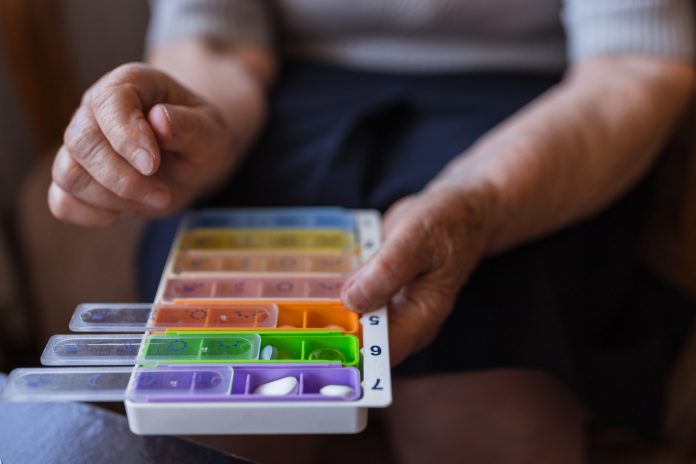Most medication errors are preventable with the right conditions. Successful technology implementation requires careful planning, proper training, and a commitment to system-wide improvements, as explained by Stéphane Boulanger, Policy Advisor at the European Patient Safety Foundation (EUPSF)
Medication errors remain one of the most persistent risks in healthcare. They cause harm, prolong hospital stays, increase costs, and undermine trust in medical systems. Yet, despite decades of research and technological advances, errors in prescription, dispensing, and especially administration continue to occur, also across Europe. The challenge is not the lack of solutions but rather the conditions under which they are implemented within healthcare settings.
The role of technology in medication safety
Technology has already demonstrated its potential to reduce medication errors. Electronic prescribing minimises transcription mistakes, barcode medication administration helps verify the right drug reaches the right patient, and automated dispensing systems ensure proper dosage and tracking. Smart infusion pumps, with built-in safeguards against miscalculation, provide additional layers of security. These tools, when properly integrated, create a safety net that reduces the burden on healthcare professionals and improves patient outcomes.
However, the effectiveness of these technologies depends on several key factors. First, they must be correctly incorporated into existing workflows, which is mainly the responsibility of healthcare providers. Too often, healthcare professionals are required to adapt to new systems rather than the other way around. When the implementation of digital tools fail to align with clinical realities and the needs of healthcare staff, they risk being bypassed or becoming a source of additional workload, potentially leading to new types of errors. Interoperability is also crucial. Systems must be implemented in a way that ensures they communicate effectively with one another to ensure continuity of care. Fragmented digital infrastructures, where electronic prescribing is not connected to dispensing or administration systems, leave dangerous gaps that undermine safety efforts.
Supporting uptake of proven safety technologies
Training is another essential component. The introduction of new technology does not automatically translate into safer practices. Healthcare professionals need adequate time and resources within their working time to familiarise themselves with these tools, and this requires strong institutional commitment. The focus should not only be on using the technology itself but also on understanding how it enhances patient safety and reduces errors. Without proper training and support, even the most advanced systems can fail to deliver their intended benefits.
Investment in digital medication safety must also become a priority at the European level. While some healthcare settings have successfully implemented medication safety technologies, access remains uneven. National differences in funding and policy approaches
create disparities, with some systems lagging behind in digital transformation. A coordinated European effort to support the uptake of proven safety technologies could help close these gaps and prevent avoidable harm.
But looking at medication safety through the lens of the responsibility of healthcare providers or policymakers is too partial to fully address the challenge. The question we should be asking is: are we truly making full use of the life-sciences industry’s potential to improve medication safety? Innovation in pharmaceuticals and medical technology has advanced significantly, that is unquestionable. However, too often, its impact is limited by the conditions in which it is implemented. If medication safety is to be fully realised, could the industry engage more actively in ensuring that its solutions, whether medicines or digital tools, are designed and integrated in ways that reflect the realities of clinical practice?
The need for a holistic, integrated approach to medication safety
While pharmaceutical companies conduct rigorous safety testing in clinical trials, one could argue that their responsibility does not end when a drug reaches the market. Medications are not used in isolation; their safety depends on how they are prescribed, dispensed,
and administered. Somehow, the effectiveness of a treatment is as much about how it is implemented in clinical practice as it is about its formulation.
As already said, medical technology companies have long been developing solutions to improve medication safety, from digital prescribing and automated dispensing to real-time monitoring and decision-support tools. These systems are essential, but their success depends on how well they could be integrated into clinical workflows. A system that is technically advanced but poorly adaptable to real-world conditions, adding unnecessary complexity or disregarding the realities of healthcare work, risks being ignored or misused.
For instance, one critical but often overlooked factor is fatigue and cognitive burden among healthcare professionals. Errors are more likely to occur when staff are overworked, interrupted, or required to operate rigid and fragmented digital systems. In this context, medication safety technologies should not only prevent errors but also provide stronger support to those using them by reducing complexity, improving usability, and fitting into the demanding pace of healthcare environments.
Pharmaceutical companies could play a more proactive role in ensuring that their medications are designed and used safely in clinical practice. Beyond refining formulations, improving packaging, or clarifying labelling, the industry has an opportunity to enhance medication safety by contributing trusted, real-time pharmacovigilance data and sharing safety insights from clinical use. This would not only help reduce medication errors but also support value-based outcomes by demonstrating the long-term effectiveness and safety of treatments. Their expertise in pharmacology and risk assessment could further strengthen the development of digital prescribing and administration systems, from refining alerts to improving dose adjustments and integrating safety measures that reflect real-world risks.
Collaboration with med-tech companies, healthcare providers, regulatory bodies, and scientific associations, whose independent, evidence-based clinical guidelines are essential to safe medication use, would help align pharmacovigilance data, guidelines, and workflows. This integrated approach would strengthen trust, improve usability, and support clinical decision-making, while reinforcing the case for value-based reimbursement.
Ensuring that medications are not only clinically effective but also embedded in well-functioning, user-friendly safety systems would represent a meaningful shift, one that recognises safety as a shared priority among all health stakeholders. Just as healthcare providers are expected to invest resources into the implementation of error-prevention measures, those who develop medications and related technologies should take into account the real conditions of their use. The complexity of modern healthcare requires solutions that go beyond isolated interventions and instead contribute to a more integrated, practical approach to medication safety.
Medication errors are not an unavoidable reality. Most of them are preventable, but only if the right conditions are in place. Technology alone is not enough, its success depends on how well it is adapted to the realities of clinical work. Achieving safer medication use requires stronger collaboration between healthcare providers, policymakers, med-tech developers, the pharmaceutical industry, and scientific associations. If we focus not just on innovation but on making it work in practice, the potential to reduce harm, and save lives, is well within reach.











